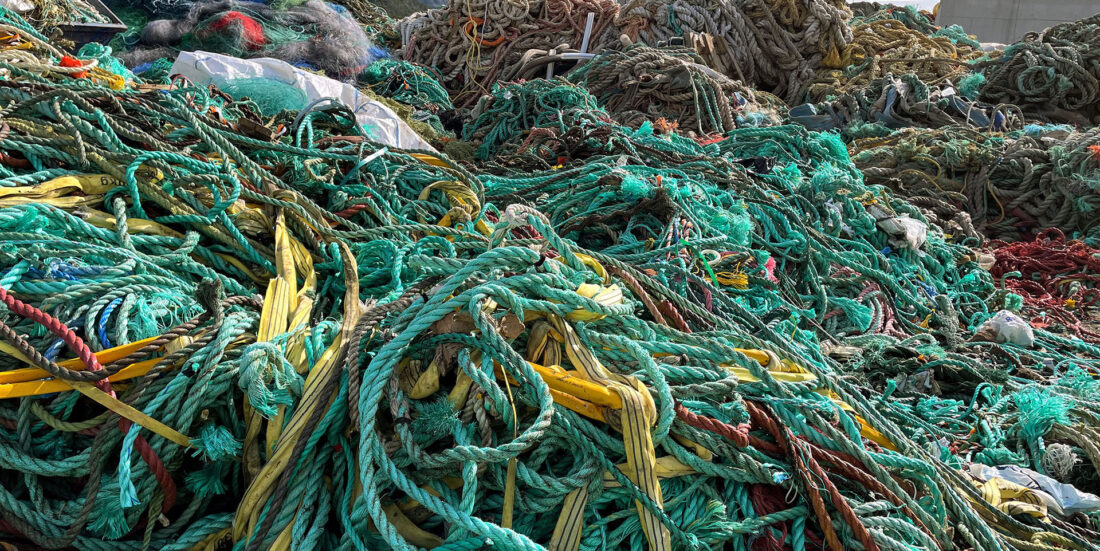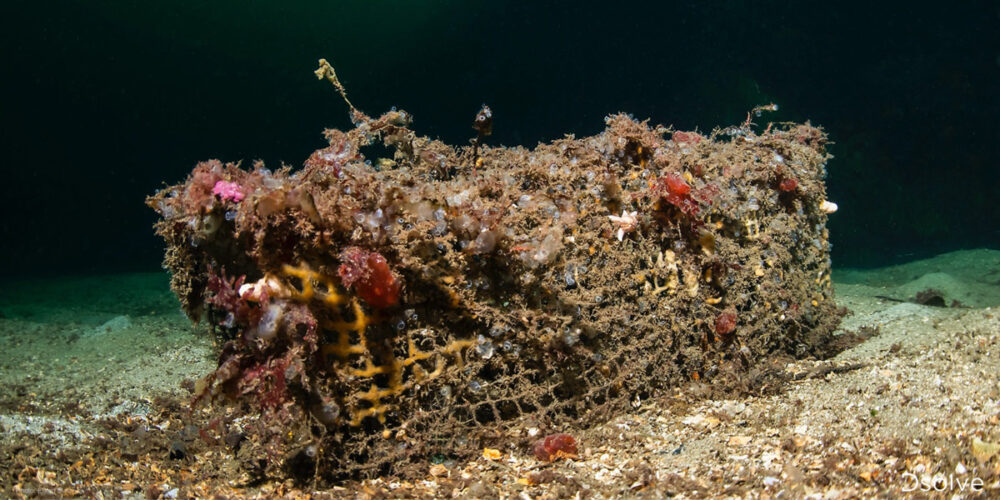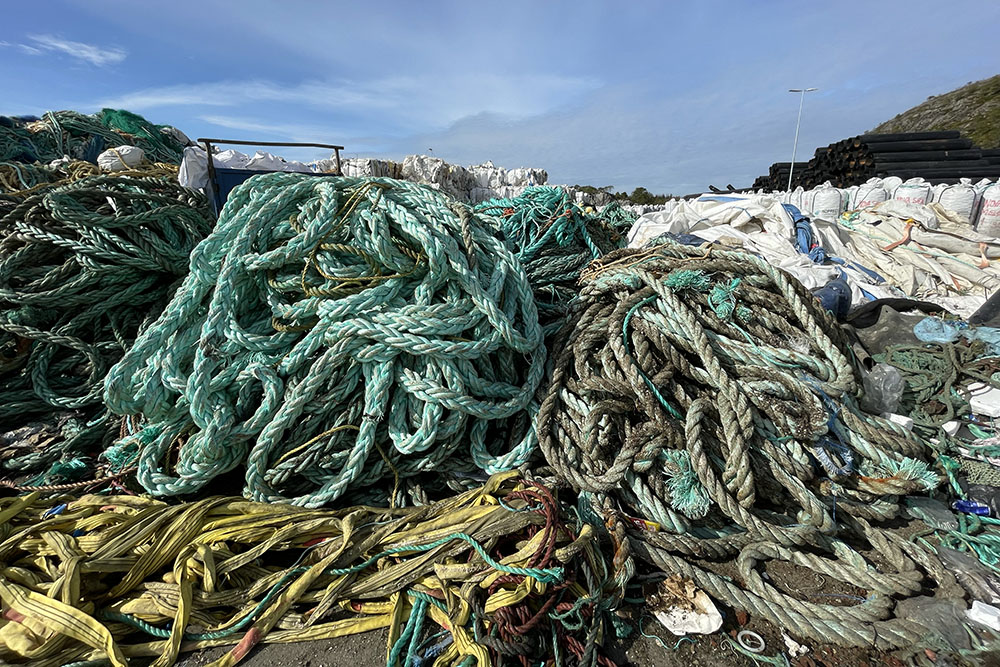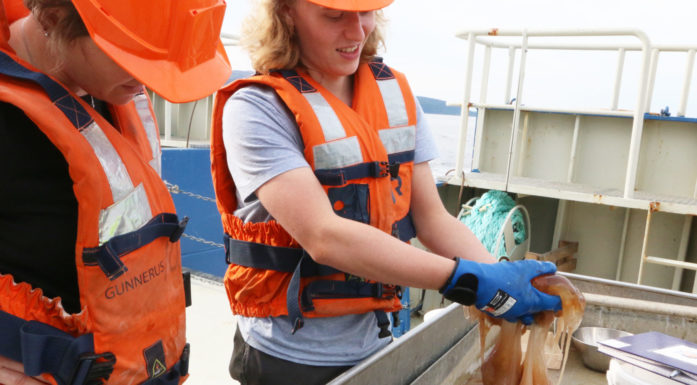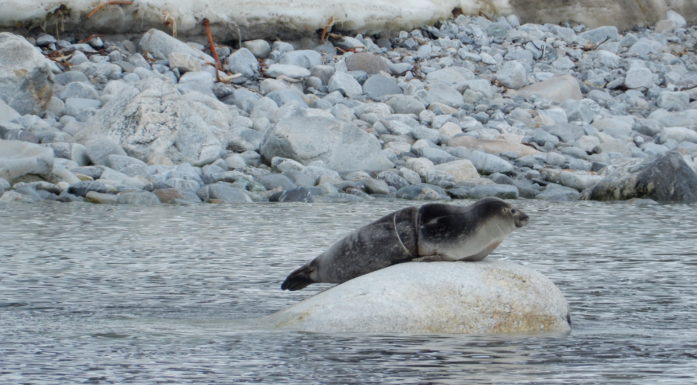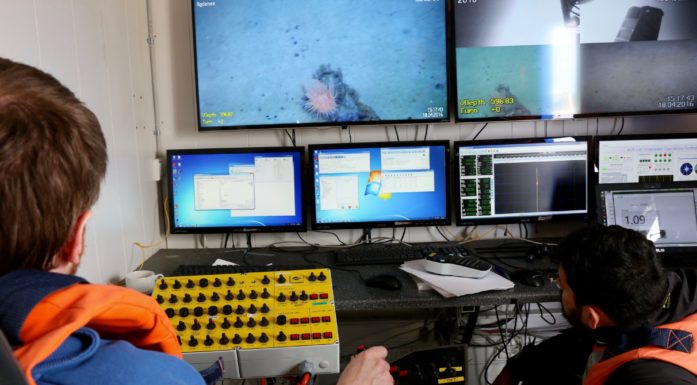If we can’t untangle this mess, Norway’s blue industry will never be green
For the first time, researchers have investigated how ropes and fishing lines are handled by the Norwegian commercial fishing industry. The fishing fleet loses almost 400 tonnes of rope in Norwegian waters every year.
Lost fishing lines and ropes are a growing problem. As a leading fishing nation, Norway, with its long coastline and fish-rich waters, is particularly vulnerable to marine litter. A new study from NTNU shows that only a third of all ropes produced and sold in Norway can be recycled in a sustainable way.
The rest are burned, buried, sent out of the country – or just pile up and contribute to something called ghost fishing.
First study with rope statistics
“Norway is heavily dependent on the blue economy, and finding solutions is becoming increasingly urgent. Without the responsible handling of ropes, the fisheries sector will never be green or sustainable,” says Associate Professor Paritosh Deshpande at NTNU’s Department of Industrial Economics and Technology Management.
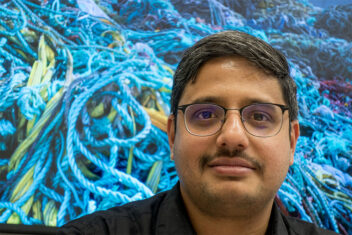
Paritosh Deshpande is participating in the Research Council of Norway’s SHIFT-plastic project (2021-2025). The researchers are working together with 26 partners from industry, regulatory authorities and recycling. The goal is to solve plastic-related problems in the blue sector. Photo: Sølvi W. Normannsen
He studies plastic litter in the ocean, and has made the first scientific estimates to establish how much rope is lost and how the Norwegian fisheries sector handles ropes.
Goal: new sustainability policy
The researchers have analysed 15 types of rope widely used by professional fishermen in Norway. They have also ranked the rope according to how easy or difficult it is to recycle.
The goal is to develop new knowledge and tools that can contribute to less litter, more recycling and increased sustainability. Deshpande has been working on this problem for the last eight years. His previous research findings have been used by the UN Environment Programme and other agencies in the UN, the EU system, the Norwegian Environment Agency and others working on policy in this area.
The largest rubbish dump in the world
Only in the last decade have we realised that we have made the oceans the world’s largest rubbish dumps. An article in Science estimates that between 5 and 13 million tonnes of plastic end up in the oceans each year, but there is no global data on how much of that comes from marine industries.
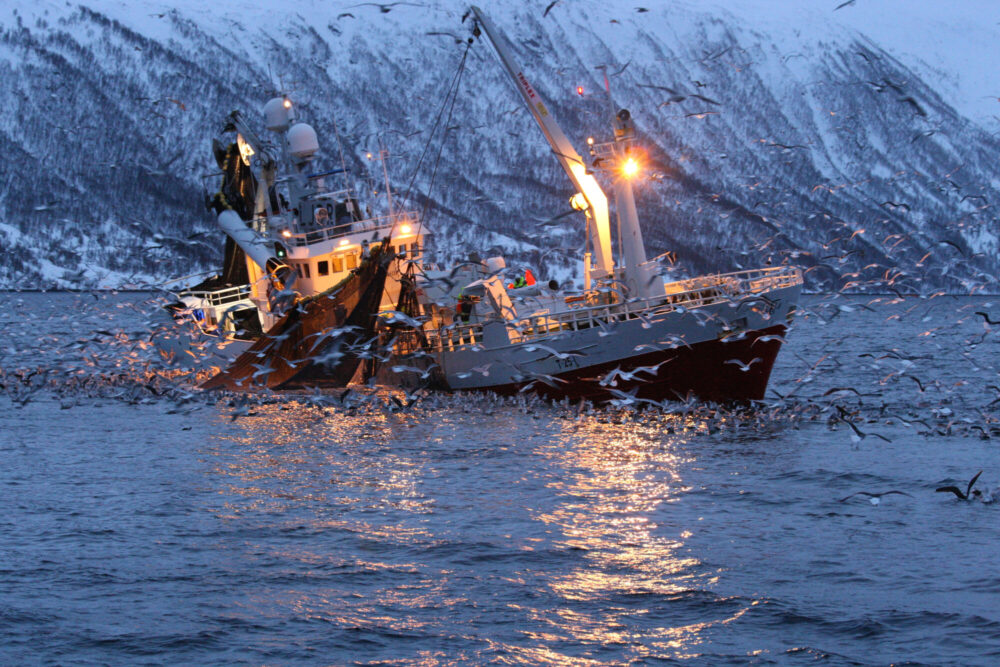
Norway’s blue industry. Rope is a key material in all types of fishing gear. It is made from different types of plastic and is used for many highly specialized tasks. Photo: Shutterstock
Same product – different content
For several years, Deshpande has collected data from Norwegian suppliers, manufacturers, dealers, fishermen, waste disposal sites, recycling companies and authorities. The collection has been repeated several times to remove uncertainty and ensure that the data are correct.
What he sees is that different manufacturers make the same types of rope and fishing gear, but in different ways and out of different materials. Many manufacturers don’t know exactly what kind of or how many different plastics their ropes contain. The methods vary, and imported raw materials may lack content labelling.
“If you buy a bottle of water, you can find out exactly how much calcium and magnesium it contains. You don’t get this kind of information when you buy fishing rope,” he points out.
Three categories of rope and three colours
An overview of the 15 most used ropes shows what they are made of, how they are made, what they are used for, and any special characteristics they have. The researchers have divided the ropes into three categories, with easy-to-understand traffic light colours according to their recyclability.
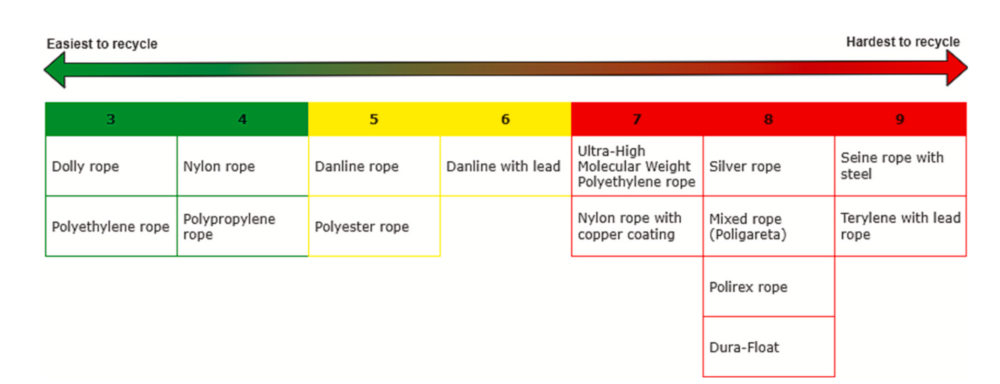
Most of the ropes sold to fishermen in Norway are almost impossible to recycle in a profitable way. New research from NTNU shows that only a third of them are suited for recycling.
The first step towards a labelling scheme?
This could be the first step towards a labelling scheme where manufacturers divide ropes into categories. Labelling can contribute to used ropes being treated more as a valuable resource, the researchers believe.
Other measures may include:
- Research and innovation for more eco-design and recyclability
- Smarter return schemes
- Best-practice schemes for handling ropes
- Increased efforts to get plastic manufacturers to use recycled plastics
“Manufacturers, fishermen, authorities, waste disposal sites and recycling companies. All of them can be part of the solution, and none of them can do it alone. This also involves UN Sustainable Development Goal number 17, which is about us only being able to achieve the goals if we work together,” Deshpande says.
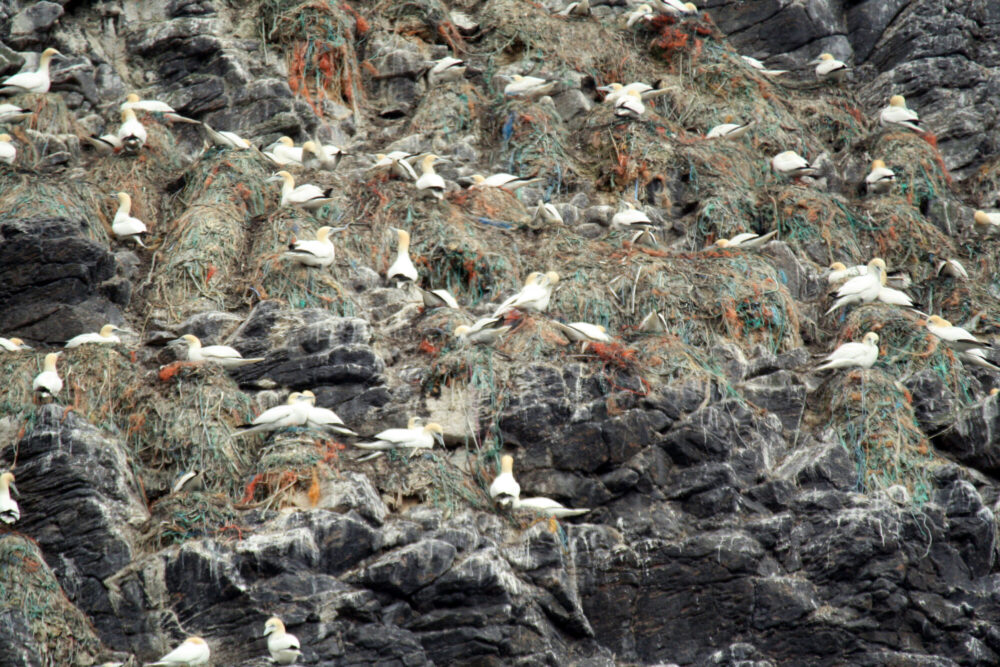
Eye opener. The distressing images from the Runde bird sanctuary have shocked many, where a colony of gannets have built nests out of old rope, plastic fibres and rubbish. Photo: Archives of Circular Ocean Project, 2018
Uncertainty and cause for concern
Waste is dangerous to wildlife that lives in and by the sea. It traps, injures and kills – and enters the food chains.
Deshpande is working to ascertain the scope of this, with Norway and the Norwegian fisheries sector as his starting point. He believes that if we are to make a green shift in the blue industry, the production cycle must be closed and the hazardous waste moved into a circular economy. In a circular economy, products must last as long as possible, be repaired, upgraded and be reused to a greater extent. When products cannot be reused, the waste material can be recovered and used as raw material in new production. In this way, the same resources can be used several times and as few as possible are lost.
To do that, we need to know what kind of plastic has gone astray, and how much is available for recycling.
“We then need to ensure that the possible solutions are environmentally friendly, socially acceptable and feasible,” he says.
Macabre fishing
In 2019, Deshpande and his colleagues published an article about the most deadly plastic waste that ends up in the ocean: fishing gear that has been forgotten, abandoned or lost.
“We conducted a material flow analysis that showed that almost 400 tonnes of this type of waste from the Norwegian fisheries sector end up in the sea every year,” says Deshpande.
A material flow analysis is a systematic assessment of flows and inventories of materials within a given system defined in space and time. Having good documentation of material flows is a prerequisite for good resource and environmental management of given substances or materials.
Crab pots, long lines, nets and fish pots get left on the seabed and continue to catch fish and other sea creatures. This macabre form of fishing can continue year after year.
In the long run, this littering also means that the fisheries end up undermining their own industry.
Rope was not included in this study, but it is the focus of Deshpande’s article, published in the Marine Pollution Bulletin. Studies also need to be conducted into how much the fish farming industry contributes to the problem.
Deshpande says that the figures they have indicate that Norwegian fishermen fill Norwegian waters with almost 800 tonnes of plastic fishing gear and ropes – every single year.
- You might also like: Combating marine waste and ghost fishing with new materials
Advice to the United Nations
Deshpande’s method and models have been adopted in other countries, such as Taiwan. He is also a member of WG-43, a work group in GESAMP – the Joint Group of Experts on the Scientific Aspects of Marine Environmental Protection. The group consists of independent scientific experts who map and analyse littering from fisheries and shipping, and advise the UN system on marine environmental protection.
“We received a serious amount of attention when WG-43 flagged the need for more knowledge about plastic-related problems in 2021. The world is finally waking up,” says the NTNU researcher.
Tip of the iceberg
The computer models follow the life cycle of the materials from when they are extracted as raw materials, through being put into production, used and maintained, until they are finally discarded.
“The figures produced by these models always have a certain amount of uncertainty associated with them, and we take that into account. No such calculations have been made for plastic in ropes in Norway before,” says Deshpande, adding:
“The point is not to get numbers that are correct right down to the last decimal place; we are measuring rubbish, not gold. The point is to have fewer ropes ending up in the sea and getting more rope into sustainable circulation.”
However, this is just the tip of the iceberg. The study did not include recreational fishing, fish farming or foreign fishing fleets.
Rope is a hard challenge to untangle
Recycling rope is particularly challenging because there are so many different types. They can be made from many different materials and have very different characteristics.
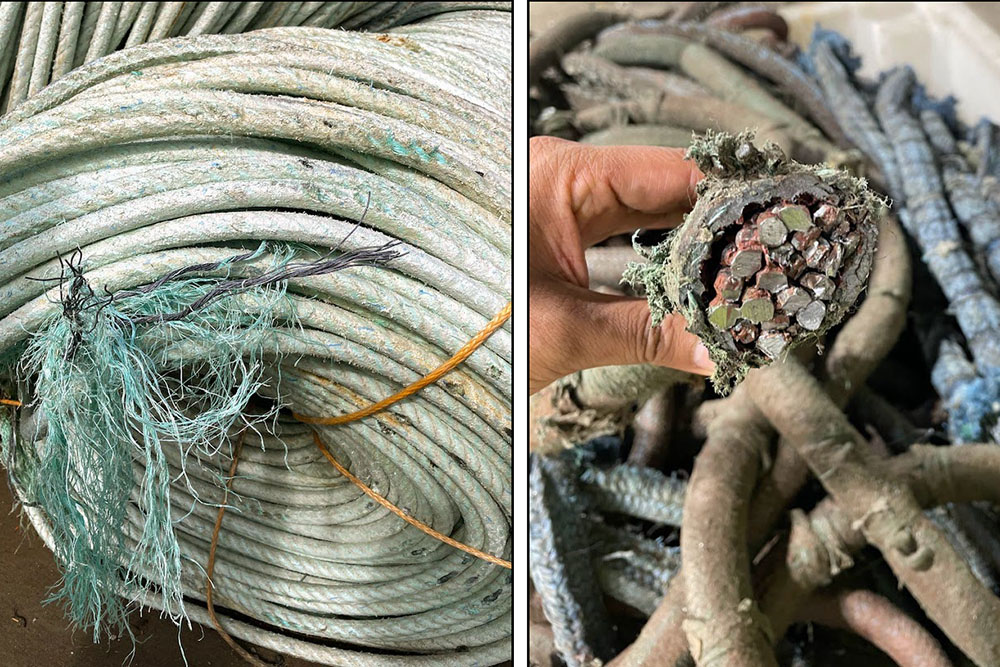
There are many different types of rope. Some can be recycled chemically, but others must be mechanically processed. Some types of rope can cause severe damage to machines and equipment. Photo: Paritosh Deshpande
They are used for mooring, trawling, towing, anchoring and lifting. Some consist of only one type of plastic, while others may contain several types that may even have different melting points. Rope can be braided with copper wire, or have steel wire in its core. Some types float, while others have lead in them to make them sink.
The mountain of rubbish that keeps on growing
Every summer for the last 40 years, the Norwegian Directorate of Fisheries has carried out a cruise in Norwegian waters to collect lost fishing gear. In addition, there are divers, clean-up operations and campaigns that clean fjords and beaches.

Every year, 55 tonnes of rope are collected in various clean-up operations. However, when 400 tonnes disappear into the depths annually, the mountains of rubbish in the ocean are only getting bigger. Photo: Gemini
“It is only in the last decade that the clean-up operations have really intensified, whereas commercial fishing has been going on for many decades. There is a lot of rubbish out there. We need to prevent marine littering from happening and find out how best to avoid its increase,” says Deshpande.
Not in compliance with EU directive
The EU’s Directive on Ship-source Pollution states that the more than 4400 small and large ports along the Norwegian coast must have reception facilities for rope and fishing gear from ships. When only one in three ports has such reception facilities, it leads to illegal dumping, illegal burning, and fishing gear being left on land without being properly processed.
The figures from NTNU show that approximately 2700 tonnes of discarded rope end up at reception facilities.
Lack of capacity and equipment
The discarded rope that comes in is often in a shocking condition, tangled and soiled with rotten biomass, fish oil and sand. Recycling companies do not have the appropriate cleaning equipment, and many find that recycling becomes technologically and economically impossible.
Norway lacks both systems and capacity for collection, and technology and equipment for recycling. As a result, more than half of the ropes and fishing gear that are delivered to reception facilities is incinerated or ends up in landfill.
The rest, much of it fully recyclable, is sent abroad for recycling.
Companies such as Nofir and Oceanize are leading actors in Norway, and ensure that waste is collected and assets are recycled. However, more people are needed to solve the problems,” says Deshpande.
- You might also like: A natural gem is being destroyed by plastic
Taking responsibility for our own waste
Deshpande says we do not know for sure how the ropes are processed when they are sent out of the country.
“It is our responsibility to manage the waste we create ourselves, or to ensure that the reception facilities process it the way we expect it should be when we export it.
In addition, when we send the waste out of the country, we lose the opportunity to create value from local resources,” says the NTNU researcher.
The EU has advocated that member states introduce extended producer responsibility for equipment containing plastic from fisheries, aquaculture and recreational fishing by 31 December this year. This imposes responsibility on manufacturers for the products throughout their life cycle, from the design of the products until they become waste and the materials are used as secondary raw materials in new products. This means that the cost of waste management is included in the price of the product, in accordance with the polluter pays principle.
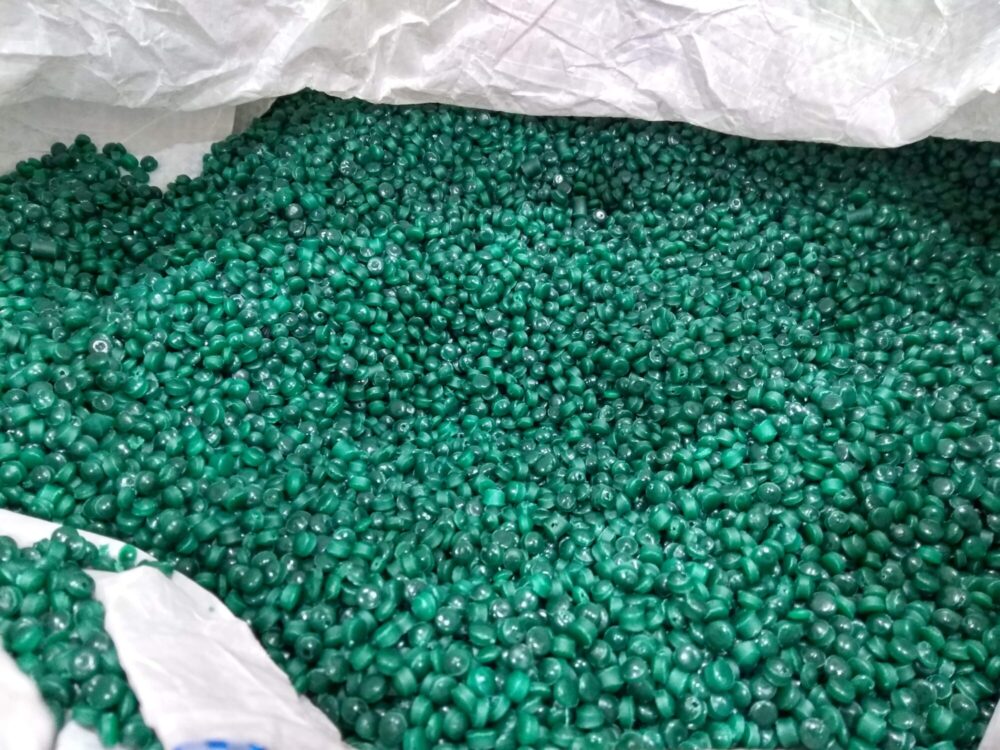
Old rope becomes new plastic. More recycling is needed to make commercial fishing greener. Photo: Paritosh Deshpande
Norway must lead the way
Deshpande says he has learned a lot from the industrial stakeholders in the region. He believes Norway is one of the countries in the world that must lead the way in developing knowledge that helps bring an end to marine littering.
He believes we can turn the tide of marine litter and create green value from the blue sector. He notes that awareness in the sector has increased and more focus is being placed on research. Most people get upset and angry at the sight of gannets sitting on nests of nylon ropes, and whales drifting ashore with their stomachs full of plastic.
References:
Paritosh C. Deshpande, Sidra Tul Muntaha, Ragnhild Bjerkvik Alnes. 2023.
“Multi-stakeholder perspective to generate evidence and strategies for sustainable management of ropes from the fishing sector of Norway”
Marine Pollution Bulletin. Volume 197, December 2023, 115798
https://doi.org/10.1016/j.marpolbul.2023.115798
